Many times, no one asks me what I use and how I photograph hockey games. Well, finally, here is the answer to the questions no one asks me.
Before this year, I would take two cameras to a game, a Panasonic point-and-shoot like the Lumix ZS20, and a bridge camera (between a point-and-shoot and a DSLR), such as the Panasonic DMC-FZ28. I like the Panasonic because their photos looked great for the camera. They weren’t high-end cameras, but they worked well enough.
Now I have a DSLR and I love it. I got the least expensive Nikon, the D3300. It doesn’t have some of the features of the higher end models, but it does a great job. It’s 24MP, which is a ton. Since I am not very close to the action, I use that resolution to crop the photos to a better size and framing.
Professional photographers set up their shots so they don’t need to fix it with cropping later. They also have big and expensive zoom lenses that are super fast and multiple cameras to put them on. I don’t have that luxury. I have four lenses that do the job.
– a Nikon 18-200mm VR general purpose zoom
– a Nikon 50mm fast fixed lens
– a Nikon 35mm fast fixed lens
– a Tamron 10-24mm superwide lens
The main lens I use for game action is the 50mm. The reason is it has an f1.8, which means it can capture a huge amount of light. That means I can get a really fast shutter speed, which stops the motion of the game. What I can’t do is control how close the action is.
If I can take two lenses in, it’s the 18-200mm zoom and the 50mm. If I can get the 10-24mm in, great. If I could only take one, probably the 35mm. But the 50mm is the one I take for action.
For camera settings, I use an auto-ISO, set the minimum shutter speed to 1/1000th of a second, and the max ISO to 1600. That keeps the shot mostly noise-free and the shutter is fast enough to freeze the action. It also means I don’t have to do as much work to keep the shutter speed fast. The knob on top is set to P (Program mode). I use a center point for auto-focus, rather than a multi-point AF setting. I have burst mode on, and can usually get six pictures off before the buffer fills up. Also, I shoot in RAW, and not JPG format.
For processing, I haven’t used Photoshop in a little while. I use DxO OpticsPro 10. It does all the usual photo processing tricks, but it also corrects for lens distortion (when a lens warps the image). It’s really neat stuff, and brings the details out of the photos. What it does to the ice is simply amazing. It can be hard to get the right exposure of the players on the bright ice. DxO makes this easy. Software doesn’t usually make me say wow. This software does.
Here is an example. The first image is an unprocessed image converted to JPG from a RAW image format. The second one was corrected with DxO. You see a lot more detail in the ice and the colors pop more in the second one. It also looks a little sharper. In the upper right corner of the picture, you can see how the distortion was corrected in banners on the wall.
The last thing is that for game action, I crop photos. A lot. I use the 50mm lens for its speed, but that means I can’t get the exact framing I want. I crop and adjust the framing on a lot of the photos, again in DxO. I export with the biggest side of an image at 1500px wide at 72pixels per inch (standard non-retina display resolution). That keeps the file size down, but it still looks good.
For example, this is converted to JPG from RAW with no corrections.
This is the corrected version:
Then I cropped it down to get this:
I almost went with this, but chose the first one instead:
I like both of the cropped versions. I just wanted something a little different and wanted to highlight the puck under the pad.
My photos are nowhere near as good as the ones real sports photography pros get. I don’t have their gear nor their experience. As my gear shows, you don’t need super expensive gear to get decent results. My 50mm lens cost $216 new. That’s dirt cheap.
But also, I’m going for something different. I’m not looking for the perfect photo. I’m not going for that one moment. I like to get a sense of the place, the crowd, and the game. I want to capture the experience. I want to take people to the arena.
Hopefully, you enjoy coming along for the ride.
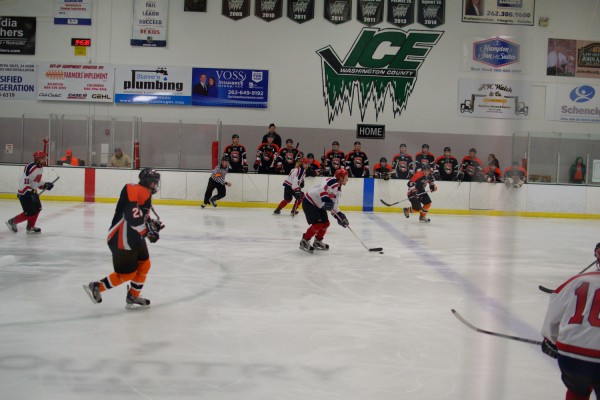
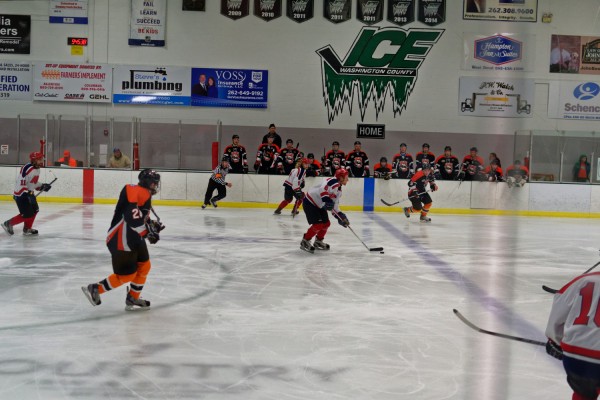
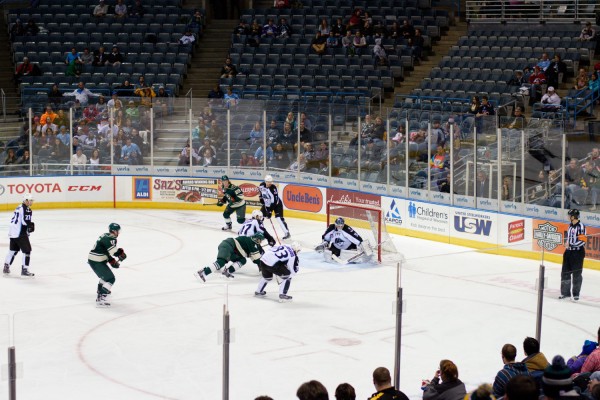
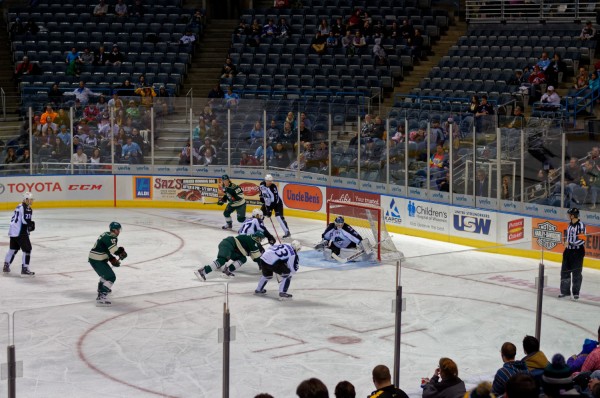

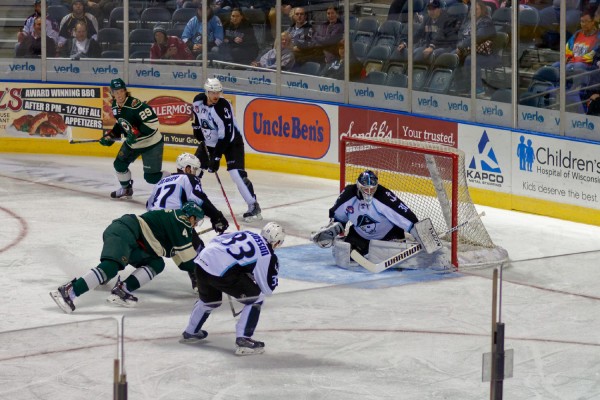
You must be logged in to post a comment.